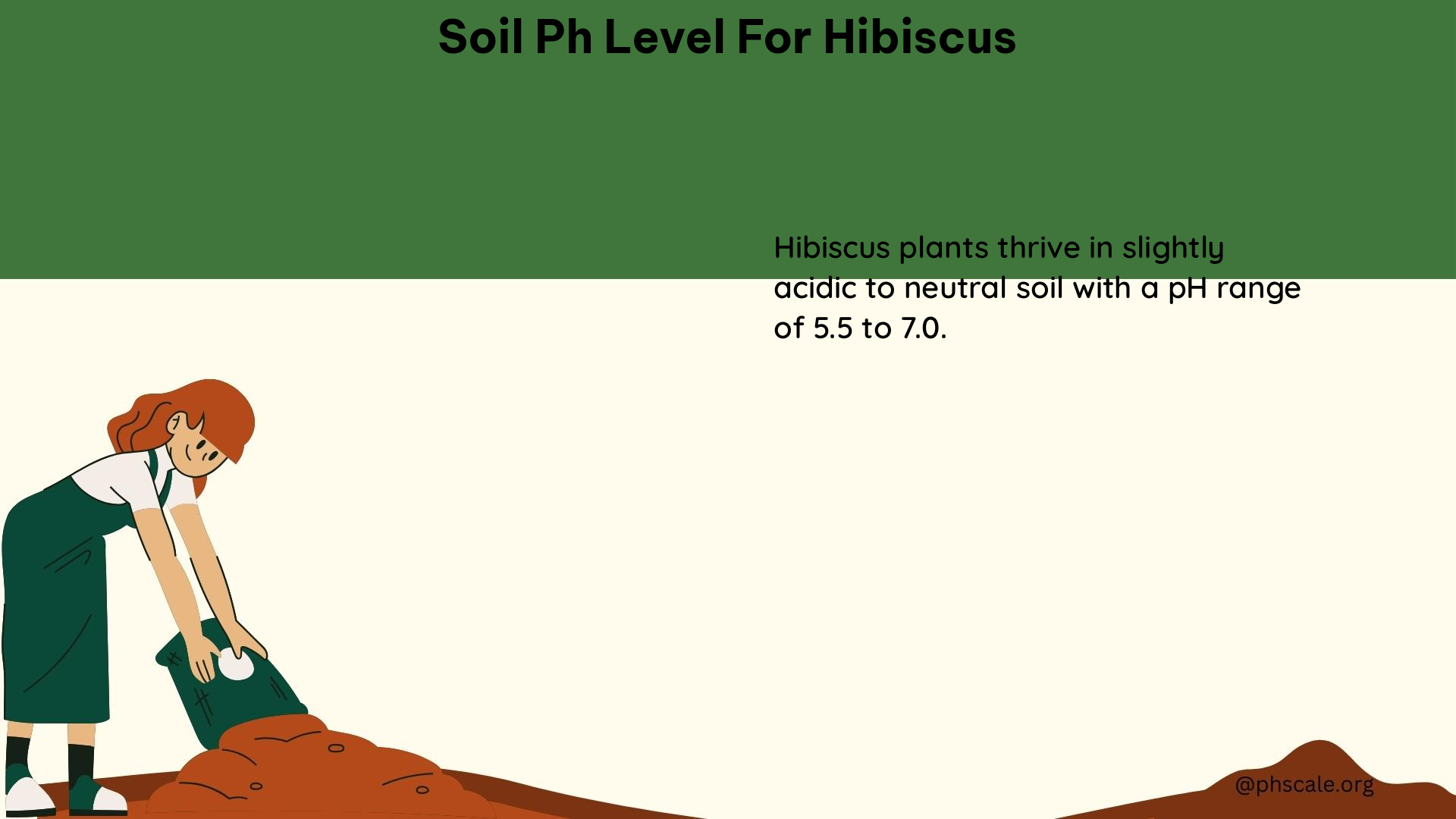The ideal pH range for hibiscus plants to thrive is between 5.5 and 7.0, with a slightly acidic to neutral soil pH being preferred. Maintaining the proper soil pH is crucial for the overall health and growth of these vibrant, tropical-looking flowers. In this comprehensive guide, we’ll explore the importance of soil pH, how to test and adjust it, and provide practical tips to ensure your hibiscus plants reach their full potential.
Understanding Soil pH and Its Importance for Hibiscus
Soil pH is a measure of the acidity or alkalinity of the soil, and it plays a crucial role in the availability and absorption of essential nutrients for plants. Hibiscus plants, in particular, have specific preferences when it comes to soil pH.
The Ideal pH Range for Hibiscus
Hibiscus plants thrive best in a slightly acidic to neutral soil pH range, typically between 5.5 and 7.0. This pH range allows for optimal nutrient availability and absorption, ensuring that the plants receive the necessary minerals and elements to grow strong and produce vibrant blooms.
Consequences of Improper Soil pH
If the soil pH falls outside the ideal range, it can lead to various problems for hibiscus plants. A pH that is too low (acidic) or too high (alkaline) can cause nutrient deficiencies or toxicities, leading to stunted growth, discolored leaves, and even plant death.
Testing and Adjusting Soil pH for Hibiscus

Determining the current soil pH and making necessary adjustments is crucial for the success of your hibiscus plants.
Soil pH Testing
To test the soil pH, you can use an inexpensive soil pH test kit or probe. These tools allow you to easily measure the pH level of your soil and identify any imbalances.
Adjusting Soil pH
If the soil pH is not within the ideal range for hibiscus, you can take steps to adjust it. Here are some common methods:
Raising Soil pH (Increasing Alkalinity)
To raise the soil pH and increase alkalinity, you can add:
– Pelletized limestone
– Dolomitic limestone
– Wood ash
These amendments help neutralize the acidity in the soil, making it more alkaline.
Lowering Soil pH (Increasing Acidity)
To lower the soil pH and increase acidity, you can add:
– Soil sulfur
– Aluminum sulfate
– Chelated iron
These amendments help acidify the soil, making it more suitable for hibiscus plants.
Monitoring and Maintaining Soil pH
After making adjustments, it’s essential to regularly test the soil pH and make further adjustments as needed. Maintaining a balanced pH is crucial for the long-term health and success of your hibiscus plants.
Factors Affecting Soil pH for Hibiscus
Several factors can influence the soil pH and affect the growth of hibiscus plants. Understanding these factors can help you better manage the soil conditions.
Soil Type
Hibiscus plants can adapt to a variety of soil types, including clay, but they prefer a moist, well-drained soil of average fertility. The soil type can impact the natural pH level, and adjustments may be necessary.
Irrigation and Drainage
Proper irrigation and drainage are essential for maintaining the ideal soil pH for hibiscus. Waterlogged or poorly drained soils can lead to pH imbalances and other issues.
Fertilizer Use
The type and amount of fertilizer used can also affect the soil pH. Some fertilizers, such as those high in ammonium or sulfur, can lower the pH, while others, like lime-based fertilizers, can raise it.
Climate and Environmental Factors
Factors like rainfall, temperature, and organic matter content in the soil can also influence the soil pH over time. Monitoring and adjusting the pH accordingly is crucial for the long-term health of your hibiscus plants.
Maintaining Optimal Soil pH for Hibiscus
To ensure your hibiscus plants thrive, it’s essential to regularly monitor and maintain the soil pH within the ideal range. Here are some additional tips:
Mulching and Organic Matter
Applying a layer of organic mulch around the base of the plants can help maintain moisture and moderate soil pH levels. Incorporating compost or other organic matter into the soil can also improve pH balance.
Watering Practices
Proper watering techniques, such as avoiding overwatering or allowing the soil to become too dry, can help maintain the ideal soil pH for hibiscus.
Nutrient Management
Providing a balanced, hibiscus-specific fertilizer can help ensure your plants receive the necessary nutrients without disrupting the soil pH.
By understanding the importance of soil pH, testing and adjusting it as needed, and implementing best practices for hibiscus care, you can create an optimal growing environment for these stunning tropical flowers to thrive.
